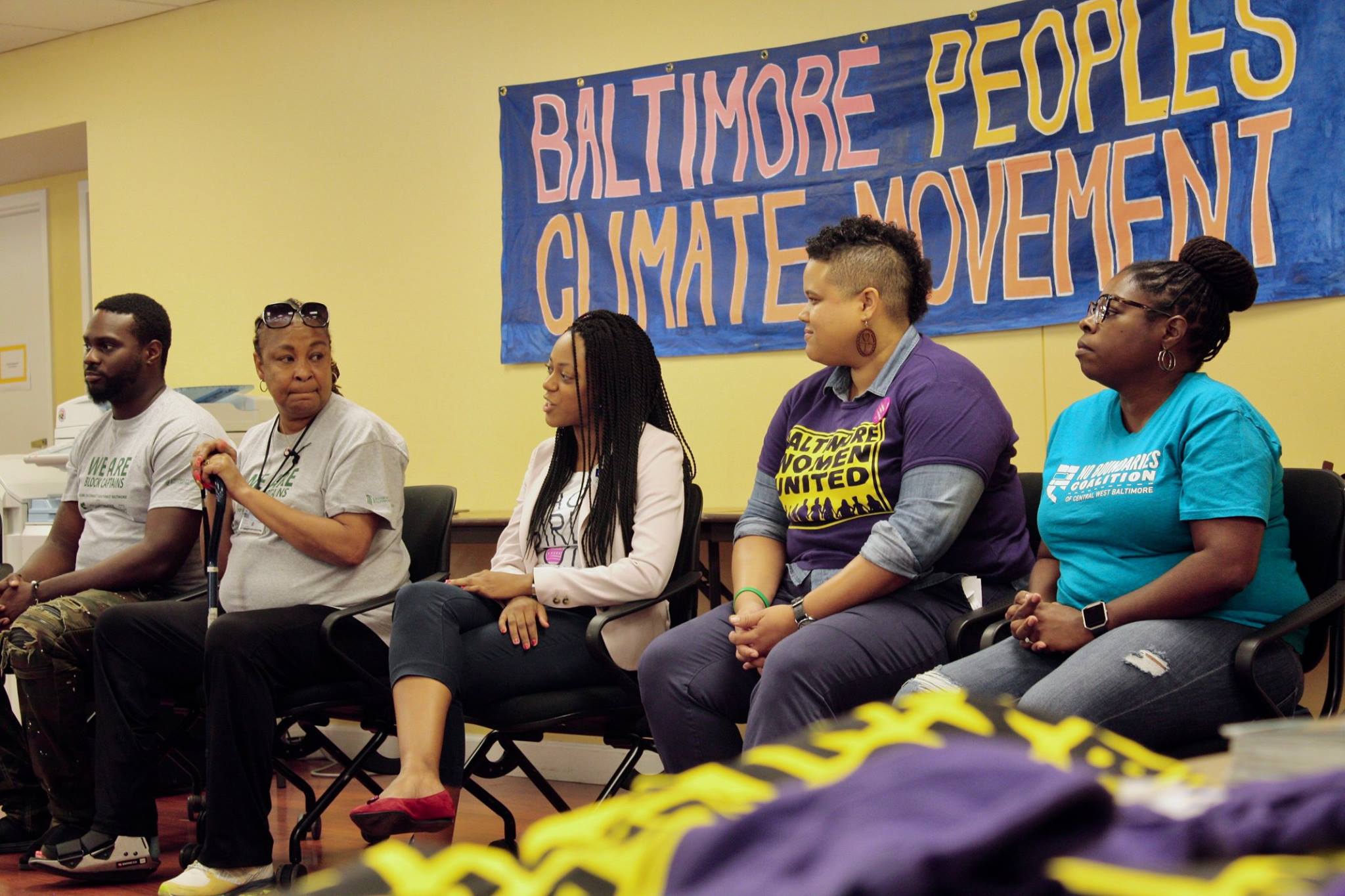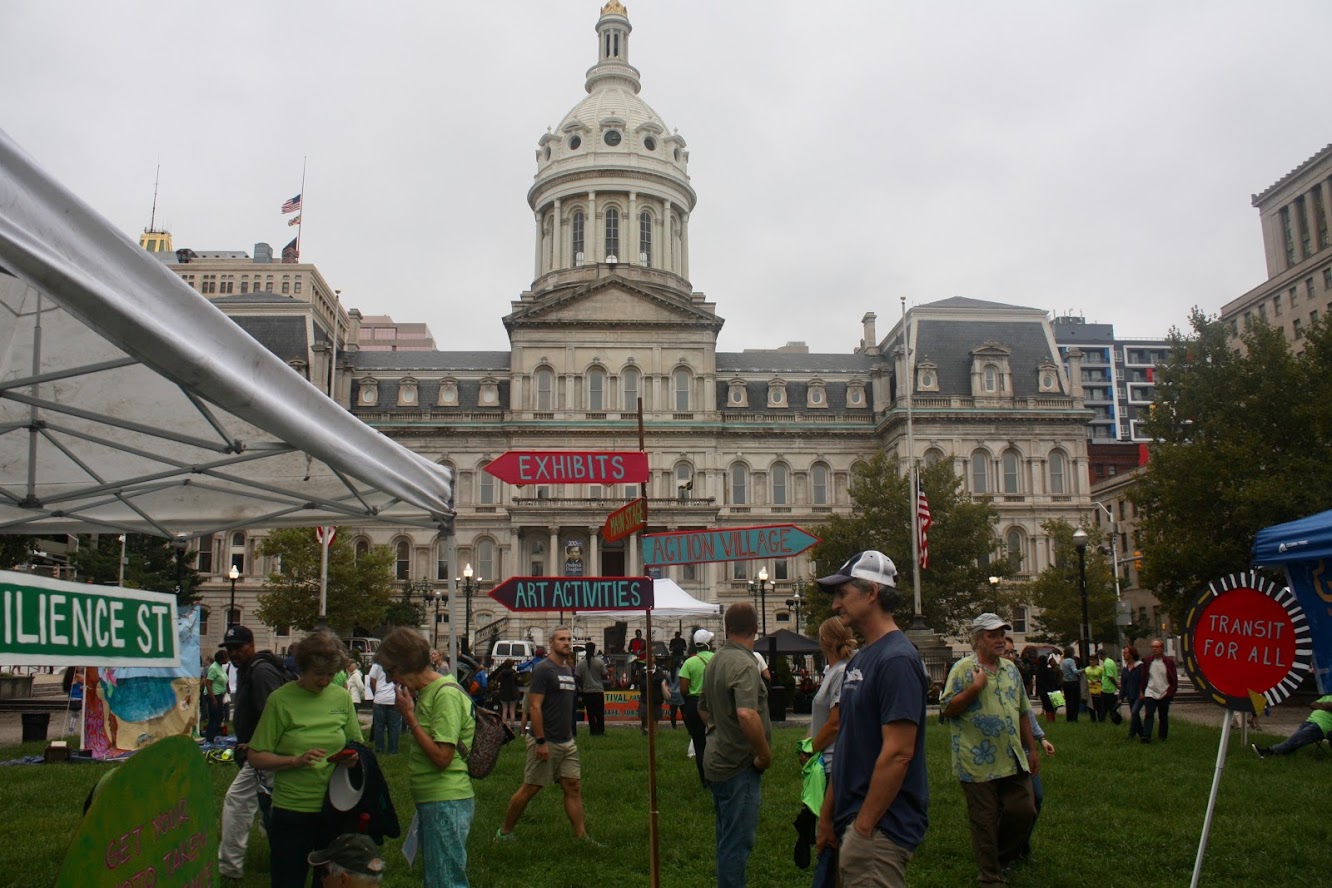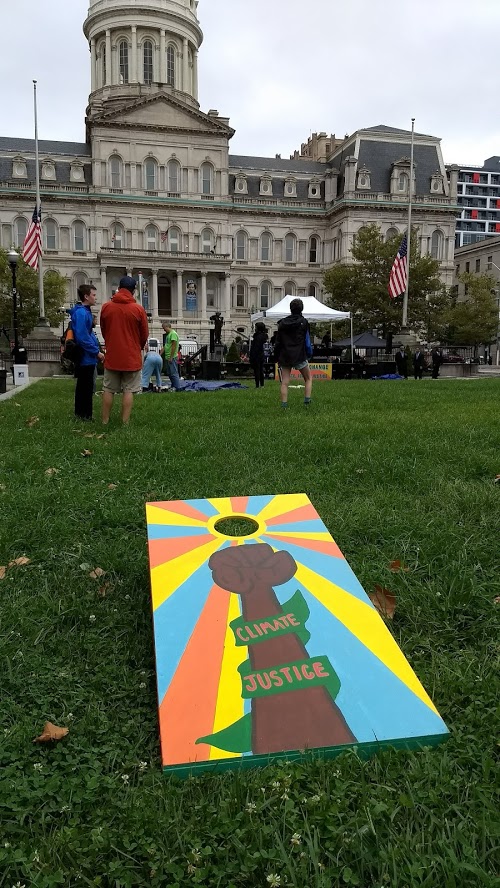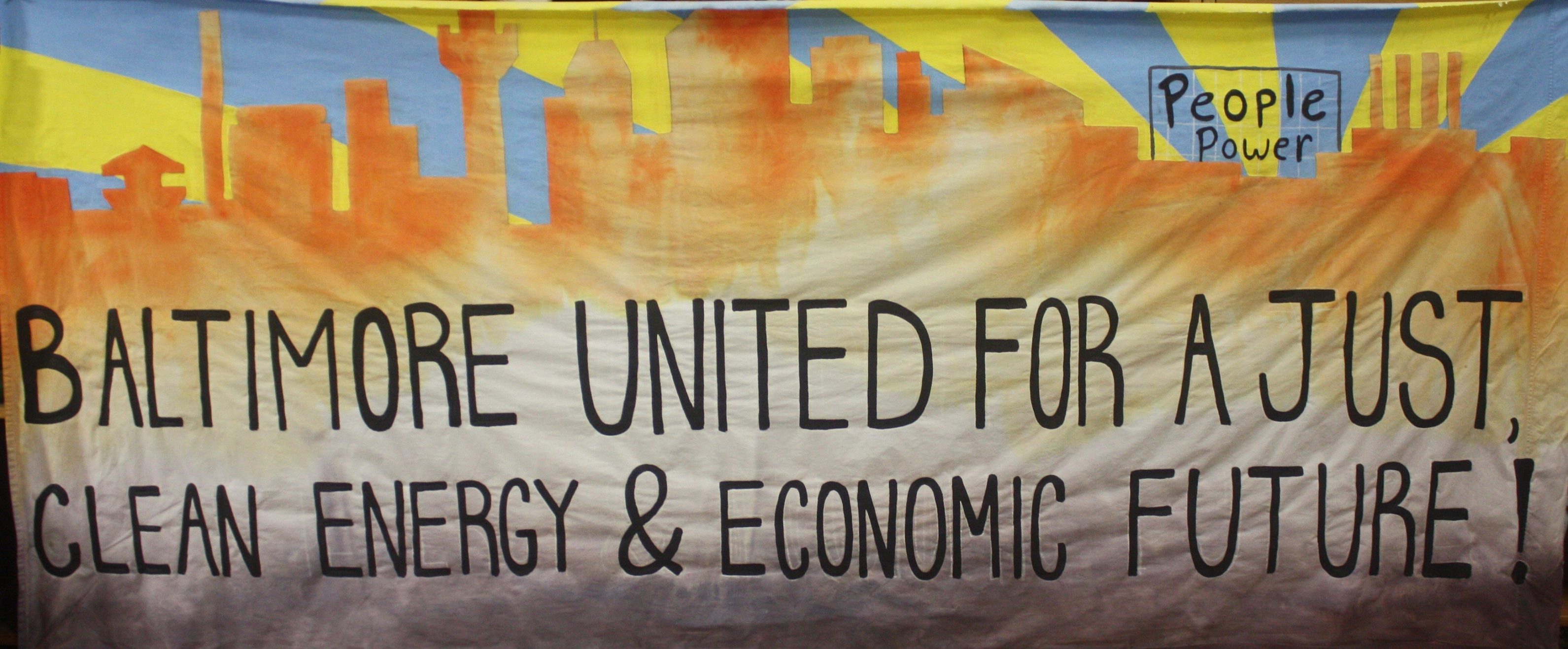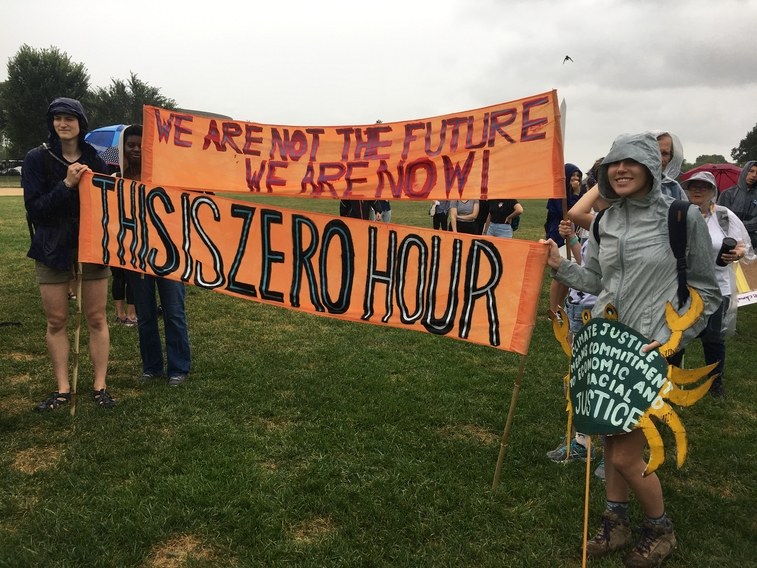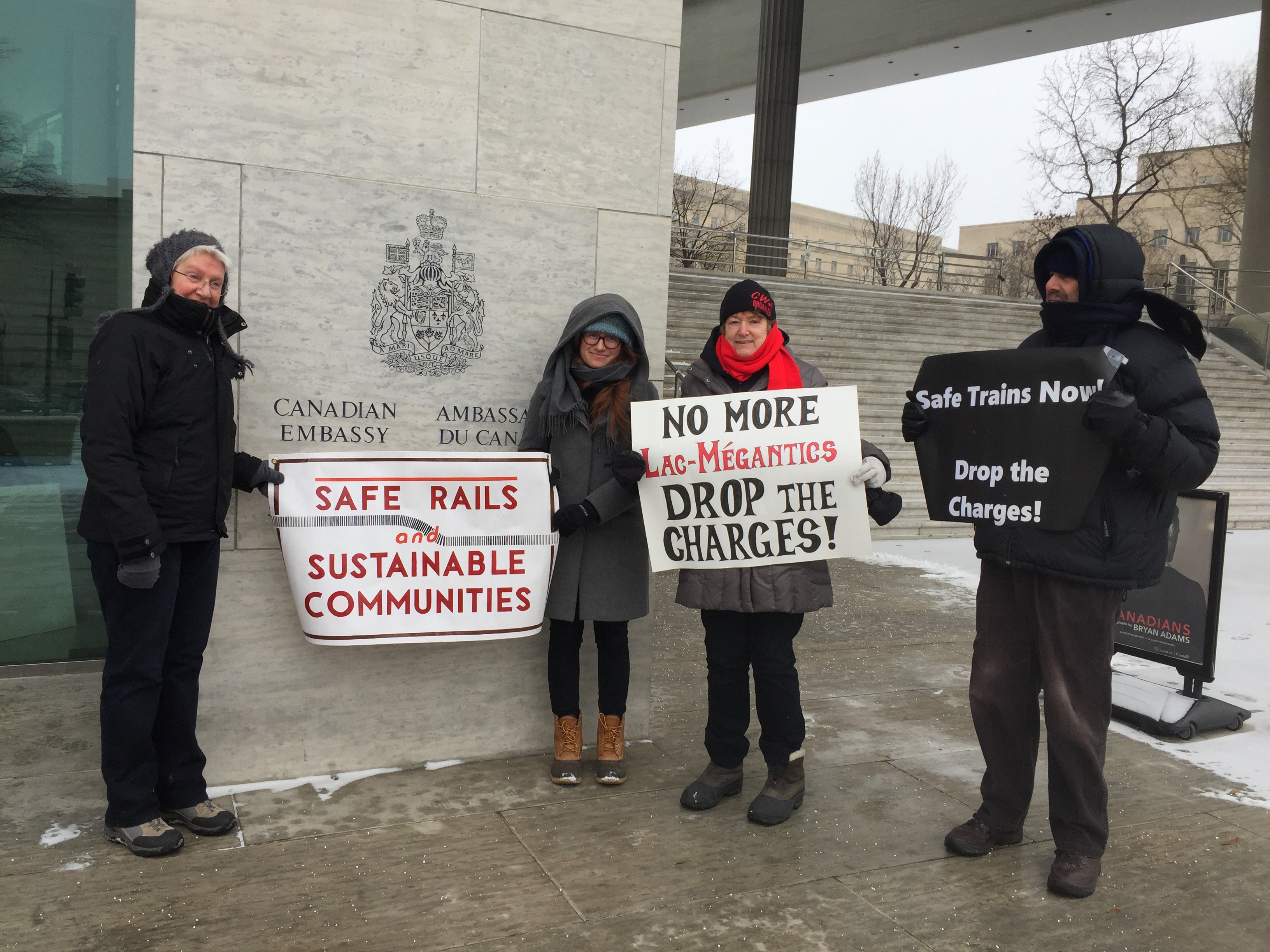This has been a busy year with the Baltimore Peoples Climate Movement, from art builds to town halls to a big festival in September! Since our Festival for Change: Climate, Jobs & Justice in September, we’ve continued to connect the dots between climate change and other critical issues in the city, building a powerful climate justice movement in Baltimore. You can read more about what this coalition of environmental and social justice groups has been up to in 2018 here and here!
We’re gearing up for more events, trainings, and mobilizations in 2019. Mark your calendars now for these upcoming events, then keep reading to hear about what we’ve been up to since September. Thanks for joining us in 2018, and see you in the New Year!
- Tuesday, January 29, 6:00pm: New Year, New Money!
- Saturday, February 2, 2:00pm: Scary Headlines & Climate Science: What Does the Latest News Mean for Baltimore?
- Monday, February 11, 6:00pm: Baltimore Peoples Climate Movement General Meeting (save the date — more details to come!)
After the Festival for Change in September, we hosted our third skills training of the year, this one focused on providing people with the resources and tools they needed to get out the vote for the November elections. In partnership with Baltimore Votes, Black Girls Vote, Southwest Partnership, Baltimore Women United, Headcount, No Boundaries Coalition, the University of Maryland, Planned Parenthood, and Communities United, we hosted a Get Out the Vote Pep Rally at the UMB Community Engagement Center on September 22nd.

Over 80 people attended and heard from several organizations about their GOTV plans and how they could get involved to make sure their friends, neighbors, and communities voted in November. Presenters shared information about reaching out to returning citizens to ensure people know that they have the right to vote, fun ways to get people to the polls like “Party to the Poll” events, and how to combine existing outreach such as community health clinics with GOTV efforts.

In October, BPCM member Communities United led a Redefining Public Safety Town Hall. Nearly 90 Baltimoreans gathered to discuss the Freedom to Thrive report, a groundbreaking report that redefines safety and security by asking the question: What are we getting for enormous police spending? The report concludes: “The choice to resource punitive systems instead of stabilizing and nourishing ones does not make communities safer. Instead, study after study shows that a living wage, access to holistic health services and treatment, educational opportunity, and stable housing are far more successful in reducing crime than police or prisons.”

Attendees then broke out into six groups after the initial discussion to hone in on Education, Environment & Public Health, Housing, Harm Reduction & Health Care, Re-entry, and Youth Empowerment. Each group discussed how we could build healthy, resilient communities by right-sizing our police budget down to what other cities spend and investing in things that actually improve public safety. Spokespeople from each breakout then shared the ideas and takeaways with the full group.



As you can see, the Baltimore Peoples Climate Movement was busy in 2018! And we’re not slowing down in the new year. Join us for these exciting events in 2019!
New Year, New Money!
When: Tuesday, January 29, 6:00 – 8:00pm
Where: Baltimore Community Foundation’s Levi Conference Room (2 E Read St, Baltimore, MD)
What: Do you have a neighborhood project, advocacy initiative, or nonprofit organization in need of financial support? Learn about foundations and the grant process from experts at the Association of Baltimore Area Grantmakers (ABAG).
RSVP: RSVP here!
Scary Headlines & Climate Science: What Does the Latest News Mean for Baltimore?
When: Saturday, February 2, 2 – 4:00pm.
Where: Zion Lutheran Church (400 E Lexington St, Baltimore, MD)
What: Have you read scary headlines about the most recent climate science reports? Are you worried about what climate change means for Baltimore? Join us for a teach-in on the most recent report from the world’s leading climate scientists!
RSVP: RSVP here!


